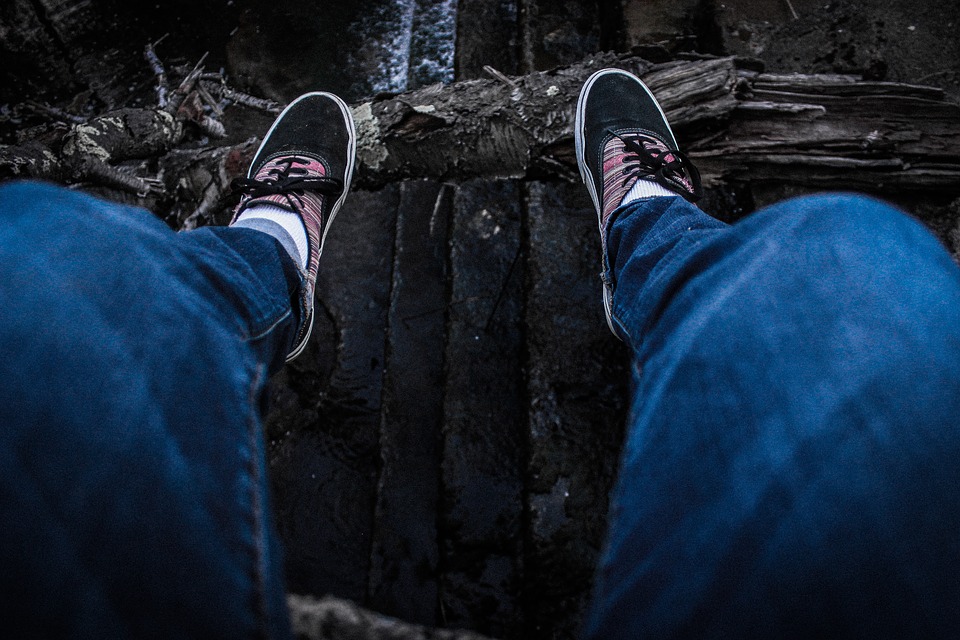It’s not uncommon for denim jeans to unravel. While this usually occurs at the bottom of the legs, it can happen to any area of the jeans. And once the denim begins to fray, it usually becomes progressively worse over time. Thankfully, though, there are several steps you can take to prevent your denim jeans from fraying, which we’re going to discuss in this blog post today.
100% Denim Construction
First and foremost, be sure to choose jeans that are made of 100% denim. Some manufacturers use synthetic materials like polyester to mimic the appearance and characteristics of denim. However, the use of these alternative fabrics can increase the risk of them unraveling at the bottom. Furthermore, not all fabrics offer the same durability as denim, resulting in damage from washing and drying. To prevent this from happening, you should choose jeans made of 100% denim and not other materials or fabrics.
Don’t Let the Bottom Drag on the Ground
Perhaps the most important tip to prevent your denim jeans from fraying and unraveling is to keep them from dragging on the ground. Some men and women wear jeans with sandals or flip-flops during the summer — a simple combination that’s both comfortable and stylish. There’s nothing wrong with wearing jeans and sandals or flip-flops, but you should choose be conscious of the bottom of your jeans. If the bottom drags on the ground, it will cause them to degrade more quickly. Unless you prefer the look of worn jeans, don’t allow them to drag on the ground when wearing them.
Check the Care Label
As with most garments, it’s a good idea to read the care label on your denim jeans for specific instructions on how to clean and care for them. Typically found inside the waistband, the care label reveals the safest and most effective ways to care for the jeans. Being that different jeans are made using different materials and construction techniques, you should always check and follow the care label. If it says “machine wash cold,” for instance, don’t wash them in hot water. Exposure to hot water could weaken or otherwise damage the denim fabric, increasing the risk of them unraveling and fraying.
Go for Quality Over Quantity
The quality of your denim jeans will play an instrumental role in determining whether or not they unravel. High-quality jeans are less likely to unravel than their lower quality counterparts. So, if you are worried about this happening to your jeans, choose a pair of high-quality jeans. Avoid generic brands sold at local retail stores and instead choose a trusted and reputable brand.
Patch Damaged Areas
Try not to panic if your denim jeans begin to unravel or otherwise sustain visible damage. Depending on the location of the damage, you may be able to patch it. Most crafts stores sell denim patches that you can use for this purpose. Or, if the damage has occurred to the bottom of your jeans, you may be able to cut and hem them. The bottom line is that you can often repair unraveled jeans, especially if the damage is minor. If you aren’t comfortable performing this repair yourself, take your jeans to a local tailor for professional help. After all, common repairs such as this usually cost less than buying a brand new pair of jeans.
Embrace the Unraveled Style
Of course, you could also embrace the look of your unraveled denim jeans rather than trying to prevent it. Some denim jeans are actually made to look unraveled. Known as “distressed denim,” it’s become a popular alternative to traditional denim jeans in recent years. Distress denim jeans are typically made by washing and rolling the jeans with pumice stones to create the appearance of natural wear. Some distressed denim jeans are also made with special chemicals to achieve a bleached or faded tone. But you don’t have to buy distressed denim jeans to get this look. If your jeans have already begun showing signs of distress, you already have a pair that are ready to be worn.
Get the Right Fit
Don’t underestimate the importance of choosing the right size jeans. If they are too big, fraying may occur due to the excess fabric being rubbed or dragged. As previously mentioned, it’s not uncommon for jeans to unravel at the bottom when they drag on the ground. Normally, this only occurs when the jeans are too big in the first place. If you choose the right size jeans, they shouldn’t drag on the ground, nor should they unravel or sustain similar forms of damage. So, make sure your jeans are sized to fit your body.
Don’t Pull Loose Threads
If you happen to discover a loose thread on your jeans, try to avoid the temptation of pulling it. Some people pull loose threads out of their jeans, believing this will stop them further unraveling. In doing so, however, they actually make the problem worse by removing part of the jeans’ structural integrity. With the thread gone, the jeans will continue to unravel. So, how should you deal with a loose thread on your jeans? Rather than pulling i out, try cutting it with a pair of sharp scissors. You can then either sew it back into the jeans for added stability or leave it be.
A good pair of denim jeans should offer you countless years of use and enjoyment. Unfortunately, however, it’s not uncommon for cheap jeans to unravel and fray after just a few months of use. If you’ve experienced this problem in the past, it’s recommended that you follow the tips outlined above to protect your jeans from this phenomenon. Additionally, consider investing in high-quality denim jeans, such as those offered here at MakeYourOwnJeans. It’s a smart investment that will prove well worth the money in the long run.












